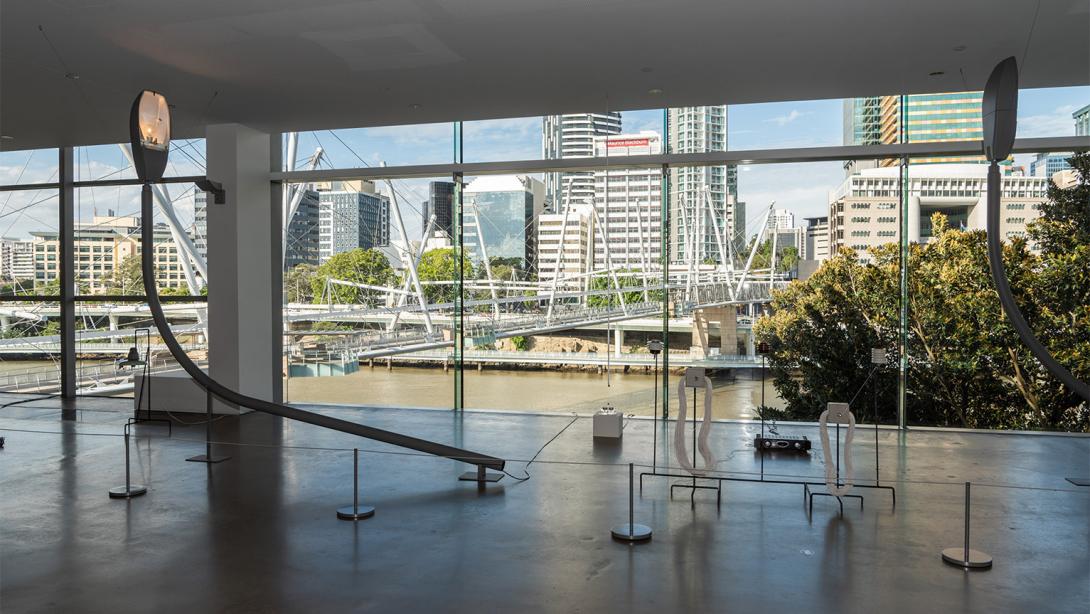Yuko Mohri
APT9
Born 1980 Kanagawa, Japan
Lives and works in Tokyo, Japan
Yuko Mohri produces compelling sound installations from ready-made materials that have been rigged to play elegant compositions. With a background in music and intermedia art, Mohri has developed a practice based around automated instruments created from found materials, which make subtle yet surprising use of intangible elements such as space, light and gravity. Many of her projects are site specific, using materials and themes relevant to or sourced from the location. Her works have been described as ‘kinetic’ sculptures, as they are activated by magnetics, gravity, light and other incremental changes in the immediate environment, often with an in-built delay. In previous works she has used street lights, machine parts, old tools and reassembled pianolas. Mohri is a versatile artist, producing theatre set designs, performances and photo series in addition to her installation practice.
Listen to Yuko Mohri 's favourite tunes on Spotify.

Yuko Mohri / Japan b.1980 / Installation view of Breath or echo 2017, GOMA, 2018 / Modified pianos, street light, light bulbs, wood, electric motor, paper, iron, ceramic insulators, concrete, cables and magnets / © Yuko Mohri / Purchased with funds from Tim Fairfax AC through the QAGOMA Foundation 2018 / Photograph: Natasha Harth, QAGOMA
Yuko Mohri’s installation Breath or Echo 2017 features a subtle soundscape of electronic pulses and delicate percussion over which automatic pianos play elegant compositions. It is inspired by the vast landscape of Japan’s northernmost island Hokkaido and the work of celebrated Ainu sculptor Sunazawa Bikky (1931–89). Mohri’s installation features a recording of the poem Bikky composed to accompany Four Winds 1986, an outdoor sculpture he designed to decay with the elements. Addressed to the wind, the poem describes a beast whose four heads and four legs correspond to the seasons, to which Bikky offers a set of four-legged trousers.
Mohri responds to Bikky’s poem with scores created in collaboration with the composers Ryuichi Sakamoto and Camille Norment, which are played on modified pianos accompanied by instruments constructed from magnets, bells and ceramic insulators found in Hokkaido. Mohri’s signature street lights flicker quietly at the end of poles laid in unusual configurations, and complement the open and contemplative music.
For APT9, Breath or Echo occupies GOMA’s River Lounge, an environment quite distinct from Hokkaido’s woody, mountainous landscape. Speakers placed on the southern edge of the building allow Mohri to extend her installation outside, where Sakamoto and Norment’s compositions, as well as Bikky’s playful words, resonate beyond the Gallery walls.
